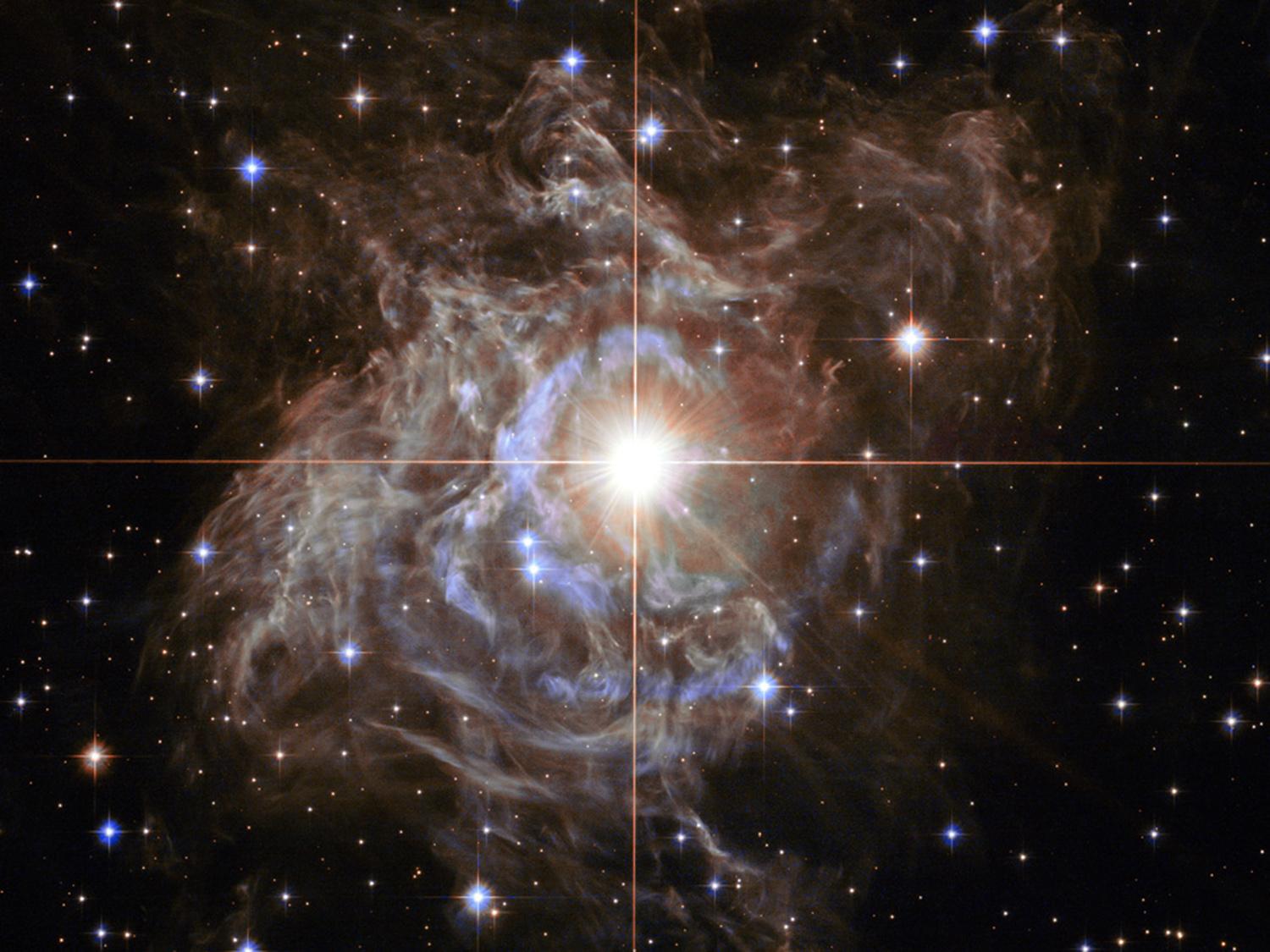Stellar subject -- Scientists including SUNY Oswego's Shashi Kanbur use cepheid variable stars like the pulsating RS Puppis (pictured in this NASA image) to try to calculate the size of the universe. Every Sunday in January at 7 p.m. Oswego's planetarium in the Shineman Center will present free shows for all ages that talk about this method and why it is important to measure the scale of the universe.
The SUNY Oswego planetarium will look at ways to try to measure the universe with "Cepheid Variable Stars: Then and Now" at 7 p.m. every Sunday during January.
The "distance ladder" is a series of techniques to measure vast distances to map out the known universe. The Cepheid Variable distance method discovered a century ago was used to calculate the size of the Milky Way galaxy and found that the Andromeda spiral was light years outside it.
In recent decades, Dr. Shashi Kanbur of SUNY Oswego's physics faculty and his collaborators have fine-tuned this distance method by noting and modeling a subtle non-linearity in the data, which can provide a more accurate measure of the size and age of the universe.
Sunday shows take place September through June with changing topics each month in the state-of-the-art facility on the second floor of the Richard S. Shineman Center for Science, Engineering and Innovation.
The planetarium has limited seating, so guests are encouraged to arrive a bit early. Shows are recommended for children ages 4 and older. An adult must accompany children under 17. No food or drink is permitted in the facility.
Parking is free in the commuter lot off Washington Boulevard and the employee lot off Centennial Boulevard across from Shineman Center.




